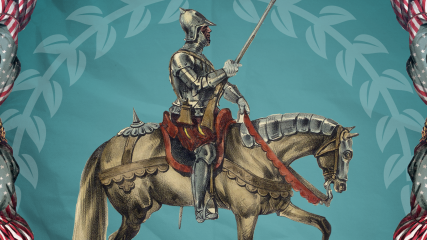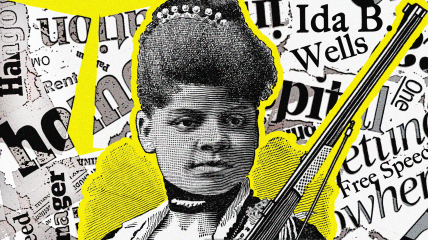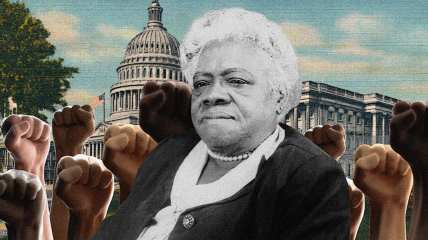Before 1619: The secret history of the first African Americans
During Black History Month, theGrio’s weekly series, “The Secret History of…” will explore the lesser-known details of some of the most popular stories from Black history. In our final story in the series, we learn about the African Americans who arrived in America before the English.
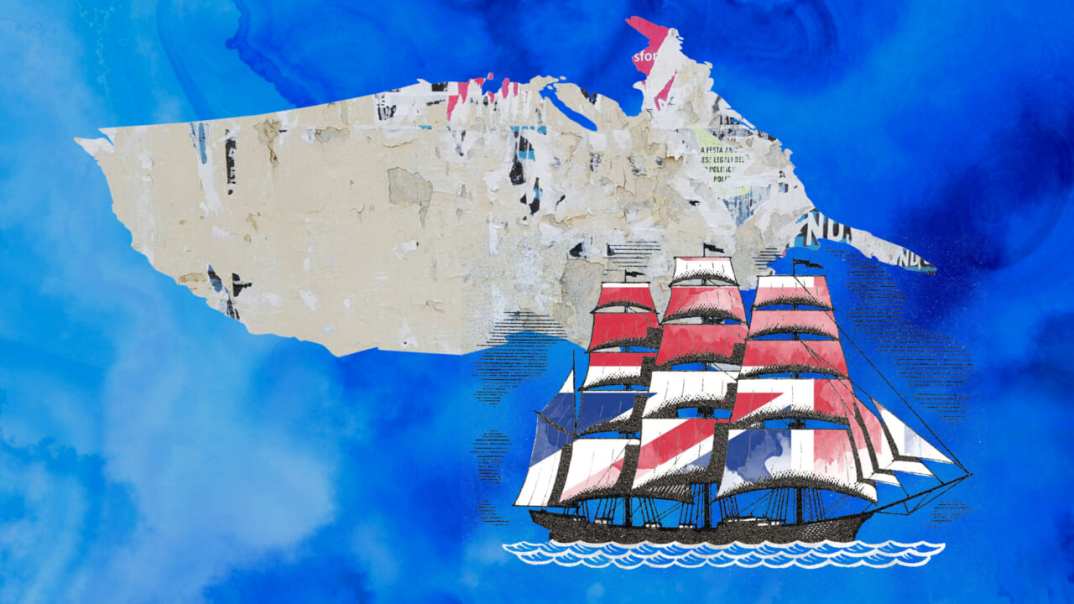
The 1619 Project is not “critical race theory.”
Not only is it a reach to equate Nikole Hannah-Jones’ award-winning journalism project to the field of legal scholarship pioneered by civil rights activist and law professor Derrick Bell, if one were to really view the history of Black people in America through a “racial lens,” you wouldn’t start with the British colonies…or even white people. Aside from the fact that Native Americans had already formed governments with constitutions that actually united their states, Britain wasn’t even “great” when the first non-Indigenous people settled on this continent.
More than a century before 105 white “adventurers” from the Virginia Company of London landed on a Virginia beachhead on May 14, 1607 (Don’t ask me how they knew they were going to Virginia; I think they had a beta version of Google Maps), Africans had already ventured to America, befriended natives and built plantations. In the words of the immortal historian Ray J: “We hit it first.”
Juan Garrido was the first documented African American.
Much of what we know about Garrido comes from his probanza de merito, or “proof of merit,” which states that while he was from West Africa born and raised, exploring is where he spent most of his days. Born around 1487, Garrido moved to Portugal before eventually landing in Spain, converting to Christianity and changing his name to what translates as “Johnny Handsome” (because, of course). Some researchers speculate that he was a formerly enslaved Congolese man someone eventually freed. In contrast, historian Ricardo Alegría believes Garrido was the son of an African king who sent his son to Portugal as an emissary. In any case, in 1503, at 15 years old, Garrido joined explorer Ponce de Leon’s expedition to New World, landing on Hispaniola’s island. From there, Garrido rode around with Ponce de Leon as the Spanish explorer enslaved and killed Taino around the Caribbean, searching for the Fountain of Wealth (that Fountain of Youth thing was a myth created years after Ponce died; we’ll get to that part.)
Garrido was a free man when he was selected in 1509 as one of 50 conquistadors to go gold-stealing with Ponce de Leon (whose name translates roughly as “Ponce, da Leon”) on the island of Borikén. By then, the traveling bandits had given the Caribbean island a nickname that inspired an influx of Spanish thieves to come searching for treasure. How could any adventurer/larcenist resist the temptation of a “port of riches?”
And if you, like a certain ex-president, don’t consider Puerto Rico to be an actual part of the United States, on April 3, 1513, Pretty John, Ponce de Leon, and their squad of strongarm gangstas, still searching for a place to rob, stepped onto the shore of a new land. They decided to name the location in honor of the Easter season as they arrived on the coast. Because “Land of Now & Later-Colored Linen Suits” was too hard to translate into Spanish, and Steve Harvey had not yet released his line of deaconwear, Ponce named the land after the Feast of Flowers—La Pascua Florida. They stayed in Florida for five days, and Ponce wouldn’t return until 1521, but their discovery still arguably makes Garrido a two-time Black Founding Father. Ponce decided to head back to Spain and was eventually rewarded with the rights to govern La Florida on one condition: First, he had to read a proclamation to the natives that they were now the subjects of King Carlos I.

Look, I know this sounds stupid, but in the 1500s, very few process servers had ships with alternators strong enough to cross the Atlantic (we don’t need to get into how the Moors pioneered Columbus’ lateen-rigged caravels), so this is how white people claimed stuff—they literally just yelled out that they “claimed this land,” and that was it. So, when Ponce showed up later without his handsome Black friend, the natives weren’t as friendly as before.
In 1521, when Massa P and his crew arrived at present-day Charlotte Harbor, Ponce had barely made it through his speech welcoming the indigenous Calusa to Spanish rule when one of the Calusa warriors’ housewarming gifts—an arrow dipped in the sap of one of the most poisonous trees in the known world—pierced Ponce de Leon’s thigh. Ponce’s whole staff, crew and record label hightailed it back to Cuba, and the thuggish conquistador who brought slavery, colonialism, genocide and death to New World natives, died from the wounds in 1521. In the first case of whitesplaining, Spain would blame Ponce de Leon’s death on the “very savage and belligerous” Calusa Indians who were “not accustomed to a peaceful existence.”
Meanwhile, as de Leon was trying to become the first “Florida Man,” Garrido settled in Mexico, married, had children and eventually became the first human to grow wheat in the Americas. Unfortunately, there were very few cupcake shops in Mexico, and everyone knows corn tacos are superior to whole wheat tortillas, so Garrido’s flour plantation didn’t make him a wealthy man. That’s when Garrido’s conquistador homeboy Hernan Cortés tempted him with one heist.
According to Cortés, there was another island, west of Mexico, filled with gold, pearls and treasure ruled by a tribe of Black Amazonian warrior women. Garrido figured he and his not-so-good-looking white friend could easily defeat a group of bedazzled Keishas. It was an in-and-out job; they wouldn’t even need George Clooney to plan it. So Garrido borrowed a few bucks for the expedition and hit the seas with his Cortés, only to find a barren wasteland with very few Black warrior women sporting gold herringbone necklaces. It wasn’t even an island, and almost none of the natives had pearl earrings. Garrido returned to Mexico broke and disappointed, and Cortés later named the newly discovered peninsula after the mythical Black pagan warrior queen, Calafia. Garrido never made it to Compton, but it’s worth noting that a Black man was on the west coast of North America nearly a century before the Mayflower left England.
In 1538, dead broke, with three kids to raise in Mexico, Garrido submitted his claim for a pension to the King of Spain, summarizing his credentials:
I, Juan Garrido, Black resident of this city [Mexico City], appear before Your Mercy and state that I am in need of making a probanza to the perpetuity of the King, a report on how I served Your Majesty in the conquest and pacification of this New Spain, from the time when the Marqués del Valle [Cortés] entered it; and in his company I was present at all the invasions and conquests and pacifications which were carried out, always with the said Marqués, all of which I did at my own expense without being given either salary or allotment of natives or anything else. As I am married and a resident of this city, where I have always lived; and also as I went with the Marqués del Valle to discover the islands which are in that part of the southern sea [the Pacific] where there was much hunger and privation; and also as I went to discover and pacify the islands of San Juan de Buriquén de Puerto Rico; and also as I went on the pacification and conquest of the island of Cuba with the adelantado Diego Velázquez; in all these ways for thirty years have I served and continue to serve Your Majesty – for these reasons stated above do I petition Your Mercy. And also because I was the first to have the inspiration to sow maize [wheat] here in New Spain and to see if it took; I did this and experimented at my own expense.
When Garrido died in 1550, other Africans, free and enslaved, had already made their mark on this new world.
In 1521, a few months after Ponce de Leon died from thigh meat poisoning, Lucas Vásquez de Ayllón landed on the present-day South Carolina coastline. To prove that his crew had “discovered” new territory, Ayllón kidnapped 60 natives and brought them back to Hispaniola. He even took one of his captives back to Spain to testify that there was no danger in South Carolina. After exploring the coastline once more in 1525, Ayllón eventually returned to the shores of South Carolina on August 9, 1526. He brought more than 600 passengers and dozens of enslaved Africans to fulfill his new gentrification contract with Spain. Along with hopeful residents, supplies and livestock, Ayllón brought dozens of enslaved Africans. There was only one problem:
Ayllón wasn’t an explorer.
Spain’s King Ferdinand had first sent Ayllón—the son of a prominent Spanish family—to Puerto Rico as a magistrate. So, when Ayllón returned to South Carolina to establish San Miguel de Gualdape—the first European settlement in the continental United States—everything did not go according to plan. He crashed a ship and lost most of his supplies on the first day. Then, despite what a Native American captive had assured Ayllón, for some reason, the locals didn’t appreciate being enslaved. In November, the angry Indigenous people joined the enslaved Africans and set fire to settlements’ buildings. It was the first time on the continent that white people would accuse Black people of organizing a violent protest. When Ayllón died on Oct. 18, 1526, from a sudden illness, his ragtag band of colonizers hopped back on their ships and jetted back to the Caribbean suburbs with the good, sane white people were, leaving everything behind. Of the 600 who arrived with Ayllón, only 150 made it back to safety.
No one knows what happened to the enslaved Africans who revolted at San Miguel de Gualdape. A few returned with Ayllón, and most historians assume they assimilated with the Native Americans. Several tribes in North and South Carolina trace their heritage back to a mixture of Indigenous people and runaway Africans. Many suspect the Lumbee of Lumberton, N.C.–a few miles north of my hometown, are the descendants of the native Americans and Africans from Ayllón’s expedition. All we know for sure is that both African and Native American populations had one thing in common:
They would not stop resisting.
Garrido was not the only free Black man on the North American continent. Another legendary African would prove to be more of an explorer than any of the handsome, rebellious Black Americans who came before him. And, while Garrido was never a permanent resident of Florida, Puerto Rico or California, Mostafa al-Azemmouri, who went by the street name Esteban or Estevanico, became a legend in places that wouldn’t be called “America” for at least two centuries. Not only did he explore more of the North American continent than Lewis or Clark, but he did it before most of the Jamestown settlers were even born.
A couple of months after Ayllón’s attempted settlement failed, explorer Pánfilo de Narváez departed Spain with about 600 people who intended to establish a colony in La Florida in June 1527. Narváez heard about Ponce de Leon’s leghole, so his merry band of land bandits included 450 soldiers, wives, enslaved Africans, indentured servants, and navigators. Nearly 100 of Narváez’s men deserted the mission when they heard about Ayllón’s disastrous experiment during a rest stop in Hispaniola. Sixty more prospective colonizers died in a hurricane along the way. By the time Narváez landed near present-day St. Petersburg, he only had about 400 men.
But on April 13, 1528, after making his formal declaration, Narváez ran into a group of coastal natives. Communicating through sign language, Narvàez explained that he was looking for gold.
“Oh, you’re looking for Apalachee,” they told Narvàez. “They have plenty gold.”
Álvar Núñez Cabeza de Vaca, whose account of his adventures with Esteban forms most of the historical record, noticed that everything Narvàez told the Indigenous tribe that he was looking for was followed by the revelation from the natives that the Apalachee had whatever he needed in droves. Narvàez was convinced—he was going to rob the Apalachee. That’s also when the Carolina gentrifiers made a crucial mistake identifiable to anyone who has ever watched a horror movie or the documentary series about the crime scene investigation team led by Scooby-Doo:
They “split up.”
Everyone knows that when you’re wandering around in unknown territory, there are three things you must do:
- Always wear ankle protection: The first casualty is usually the person who sprained their ankle running through the forest, trying to evade the zombies or the ax murderer.
- Don’t “check it out”: White people cannot resist checking things out. Whenever the group is huddled in a corner hiding from an attack, there’s always some curious soul who hears a sound and tells the squad: “I should probably go check that out.”
- Stay together: Never, ever “split up.”
Esteban knew that splitting up was the most ill-advised move in all of history. It would later cause the Revolutionary War, the Civil War and the destruction of Eddie King Jr.’s career. (There is a reason you don’t own an album by The Fat Boy). A dedicated student of history will learn that splitting up ranks somewhere between “let’s take their land” and “maybe I should put this shoe polish on my face for the Halloween party” in the top five whitest moves of all time. But, because another expedition member enslaved him, Esteban stayed quiet, planning ahead.
Cabeza de Vaca, on the other hand, tried to tell his boss that this was a bad idea, but on May 1, 1528, Narvàez split his crew into two contingents. One hundred would sail the coast to find a suitable spot to set up shop while 300 of his fighters marched through the unclaimed continent to separate the Apalachee from their gold. Along the way, they would enslave members of the tribes they encountered, steal food and plunder the Indian villages. But because they believed in Southern hospitality, the aggrieved Indians would still gladly point the Spanish pillagers in the direction of the Apalachee.
When the expeditionaries finally entered Apalacheen territory on June 25, very few men were around, so Narváez settled in his new territory and forced the female natives to make food for his men. Before looking for gold, the new warlord began reciting his Castillian declaration of claimsmanship and saw the sky darken.
It wasn’t cloudy.
The Apalachee warriors rained arrows that quickly pierced the Europeans’ “good armor.” The Spanish were under attack. The so-called “savages” had the Christian warriors under siege for three weeks, forcing them into desperation and starvation. Although the wild game surrounded the village, the Spanish soldiers were so afraid that they couldn’t even hunt. Meanwhile, Esteban was just chilling. He had no allegiance to the Spanish and was used to being hungry. After a month of arrow-dodging, the Spanish decided to make a break for it. Esteban grabbed his duffel bag and headed out, too. But, despite Narvàez’s shortcomings as an explorer, Esteban was the one who made a significant discovery about his enemies’ culture:
The Apalachee didn’t know how to let stuff go.
As the conquistadors sprinted for the coast, the disgruntled Indians chased them, killing every white man they saw. Not only did the Spanish get their mollies whopped, but they also had to trudge through the Florida swamp hungry, goldless, and endure a “shower of arrows.” They hoped that the Aute, one of the tribes they had enslaved on the way to the Apalachee, would let bygones be bygones and offer shelter to the Spanish. But when they arrived at the Aute village, the Indians had burned their encampment to the ground and vanished.
It turns out the various natives had been advising Narvàez to rob the Apalachee because all the Indigenous tribes in the area knew the Apalachee boys wanted all the smoke. The neighboring groups sent scouts to warn the Apalachee, knowing that if anyone could get rid of the white bandits, the Apalachee could.
The Apalachee did.
They chased the Spanish to the Gulf of Mexico, surrounded them and just waited while the Spanish hid along the coast with few provisions, no ships and a few horses. Desperate, the Spanish decided to eat their horses, melt every piece of metal they owned, chop down some trees and make rafts in hopes of escaping to anywhere. On September 20, Esteban’s Spanish slavemasters pushed five 30-foot-long rafts into the sea. Two of the surviving rafts landed in Texas, and, for four years, Esteban watched his white enslaving army die off while he thrived. By 1532, only four of the original 600 were still alive—Esteban, Cabeza de Vaca, and two other white boys.
Over the next two years, the four men traveled throughout Mexico, Texas, New Mexico and Arizona. Ironically, Esteban proved his worth to his former enslavers by helping them escape after Texas natives repeatedly enslaved the colonizers during their 3,500-mile overland trek through present-day Texas to New Spain (aka Mexico). As an Arabic-speaking African who traveled with Spanish-speaking Christians, Esteban displayed a remarkable propensity for language and communication. He learned sign language and interacted with tribes throughout the Southwest and Mexico. When Esteban and his compadres arrived in Mexico City, a Spanish conquistador introduced the remarkable Esteban to one of his famous conquistador buddies who was already a celebrity in New Spain:
Juan Garrido.
After the stories of “Esteban el negro” spread, he was chosen to lead an unarmed contingent to explore the territory north of Mexico City. Along the way, he seemed to befriend every group of natives he encountered, even those who were hostile. Without the help of a single white man, Esteban led a hundred Mexican Indians across the Sierra Madre mountains, a feat that defeated every notable Spanish explorer on the continent.
Esteban set up a system to travel ahead of his contingent and hang out with the native women. He would send a cross whose size corresponded with the wealth of the people he encountered. On March 21, 1539, he sent a cross as big as a man, but when the Spanish arrived at a village on the border of current-day Arizona and New Mexico, the Zuni informed the Spanish: “The Black dude? Nah, he’s dead, bruh.” However, some non-European scholars like Juan Francisco Maura believe Esteban may have convinced the Zuni into helping him fake his death so he could finally be a free man.
Regardless of what happened, Esteban would eventually be erased from American history. However, Native American tribes still share stories of the mysterious black-skinned man who discovered more of America than Christopher Columbus, Ponce de Leon, and Leif Erikson combined.
We know about another Black American from a fur trader named Adrian Block because he was a tattletale. In a letter to a Dutch magistrate, Block complained that one of his competitors gave natives too much for beaver pelts. After his dry snitch, Block spoke of Juan (Jan or Joao) Rodriguez, the son of a Portuguese sailor and a West African free woman who was born in the present-day Dominican Republic. A Dutch captain noticed Rodriguez’s ability to learn Indigenous languages and asked Rodriguez to serve as a translator on a trip to their North American trading post. But when the Dutch were ready to return to Amsterdam, Rodriguez did what anyone who wasn’t ready to leave a party would do: He told them he would find a ride.
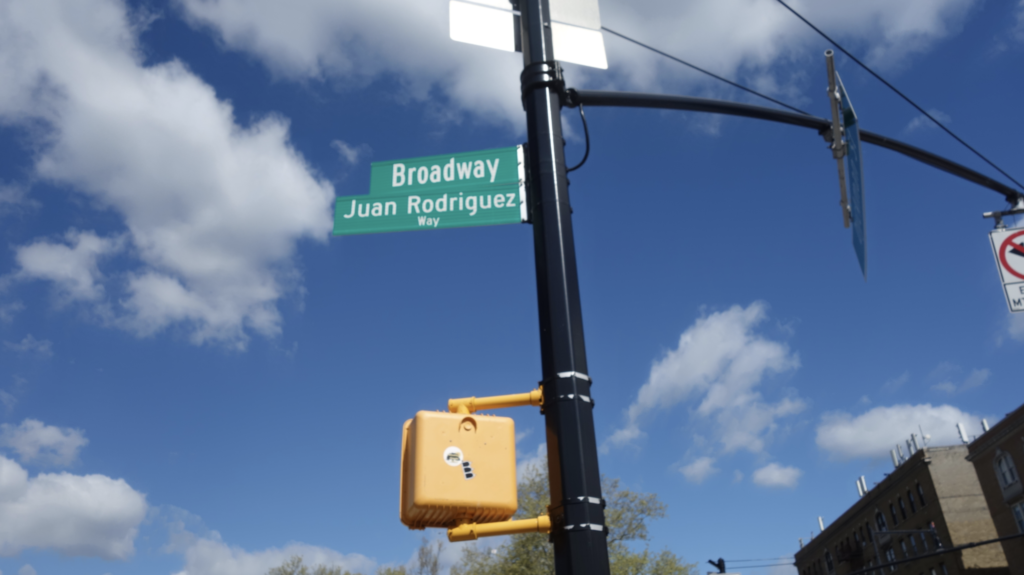
Although the official seal of America’s biggest city claims it was founded in 1625, six years before the White Lion and Treasurer brought 20 and odd negroes to Virginia, Juan Rodriguez proved that if you can make it there, you can make it anywhere. In 1613, he became the first non-Indigenous settler on the island of Manhattan.
As you can see, the actual critical race theorists are the people who perpetuate discord by teaching false narratives about Christopher Columbus, the Pilgrims and Jamestown. They are the ones who are teaching history through “the racial lens” of whiteness. The truth is not “divisive.”
Yet, if you ask actual Americans like the Pueblo in New Mexico, the caretakers of their oral history will tell you about the intelligent, multilingual Africans who originally came to America.
“The first white man our people saw was a Black man.”
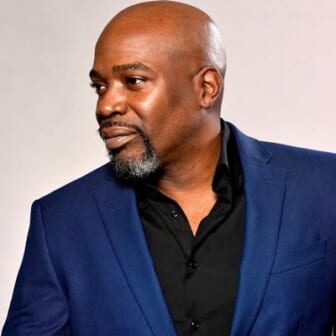
Michael Harriot is a writer, cultural critic and championship-level Spades player. His book, Black AF History: The Unwhitewashed Story of America, will be released in 2022.
TheGrio is FREE on your TV via Apple TV, Amazon Fire, Roku, and Android TV. Please download theGrio mobile apps today!
